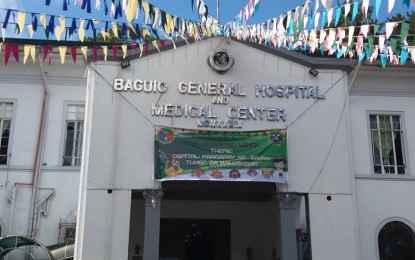
Facade of the Baguio General Hospital and Medical Center (PNA file photo)
BAGUIO CITY -- Patients from Northern Luzon provinces need not go to Metro Manila to get medical services once the five specialty centers at the Baguio General Hospital and Medical Center (BGHMC) become operational.
Dr. Ricardo Runez, chief of hospital of the BGHMC, on Tuesday said a kidney center, lung center, brain center, trauma center, and heart center -- all within the 25-hectare BGHMC reservation -- would be completed in 2021.
He said the three-year development program started in 2018 and is now on its second year, with the construction of several buildings being done to house the specialty centers. A parking building is also being built to avoid the use of roadsides to park cars.
“We are moving toward the direction that all specialties will already be available here [at BGHMC] so that patients need not go to Manila just to receive specialized medical attention," Runez said.
The catheterization laboratory (cath lab) of BGHMC, which will be part of the heart center, is set to formally open next month. The laboratory will allow surgery procedures for patients who require removal of blockade in the heart’s artery.
The hospital sits within five hectares of the BGHMC reservation while about 7.5 hectares are occupied by informal settler families, Runez said. The rest have been identified as forestry and watershed areas.
The BGHMC's development expansion uses 2.5 hectares. The hospital's bed capacity has been increased to 800 in 2018 from the previous 500.
The hospital receives about 1,500 outpatients daily or more than 400,000 a year and an average of 40,000 in-patients per year, Runez said.
Runez said that in 2018, data showed that 44 percent of the patients are Baguio residents, 21.38 percent are from Benguet, 19.4 percent from Pangasinan, 4.52 percent from La Union, 2.07 percent from Nueva Ecija, 1.76 percent from Mountain Province, 1.13 percent from Nueva Vizcaya, 0.98 percent from Ifugao, and 4.4 percent from other provinces, including those from Region 3.
About 90 percent of its patients are indigents, making the government subsidize around PHP400 million for poor patients.
Once the development is completed, the current 1,500 personnel will be increased to 3,000 -- the personnel requirement submitted prior to the start of the three-year development plan, and approved by the Department of Health. (PNA)
